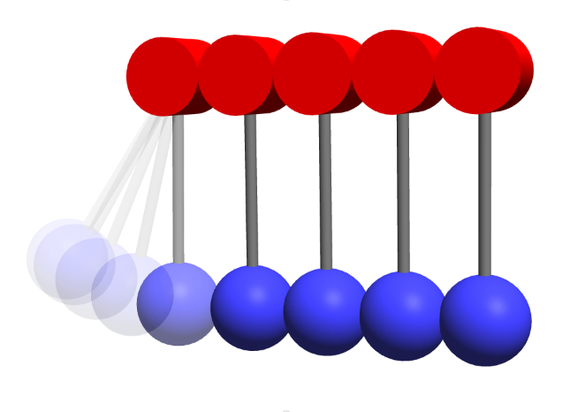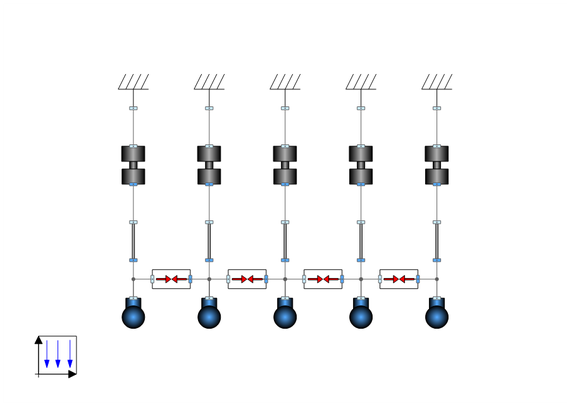Newton's Cradle
Newton’s cradle, here modeled with the free PlanarMechanics library in Wolfram SystemModeler, is a classical demonstration of three important physics principles: conservation of momentum, conservation of energy and friction.
To run this example, you'll need
The latest versions of System Modeler and Mathematica.
Please make a selection:
Get afree trial Continue
with download
The Principles of the Newton Cradle
As the first ball is released, its potential energy is converted to kinetic energy, and when it is abruptly halted during the impact with the second ball, most of that energy is transferred into the second ball by compressing it. The same thing happens to the third and fourth balls, but when the energy transfers into the fifth and final ball in the chain, the energy causes it to move. In an ideal Newton’s cradle, the fifth ball would move with the exact same energy as the first ball, but in real life, friction between the balls prevents this from happening.

The Model
The wires with the attached balls are modeled like individual pendulums where the balls are connected to each other through a custom‐designed contact model (see the expanded image). The contact model handles the collisions and calculates the contact force between the balls as they collide with each other. The model is an ideal Newton cradle; that is, there is no friction between the balls.
3D Animation

Since the model is built in SystemModeler using the PlanarMechanics library, an animation of the model is generated automatically and provides a fast and easy-to-understand visualization of the cradle system.
The leftmost ball is released from a 45‐degree angle. Note how the first and last balls move at the same speed, since this is an ideal Newton cradle where no energy is lost due to friction.
Wolfram System Modeler
Try
Buy
System Modeler is available in English
and Japanese
on Windows, macOS & Linux »
Questions? Comments? Contact a Wolfram expert »
